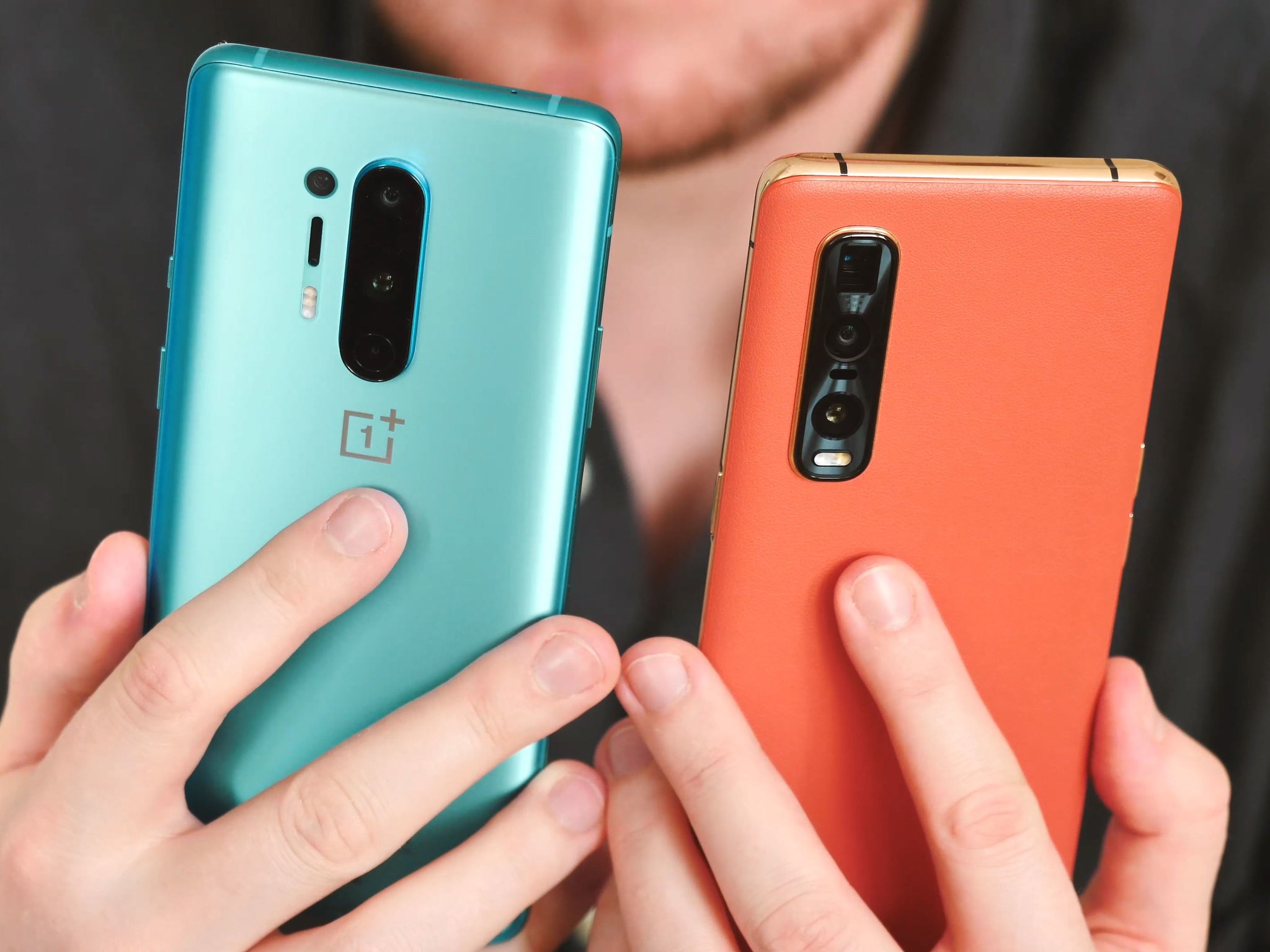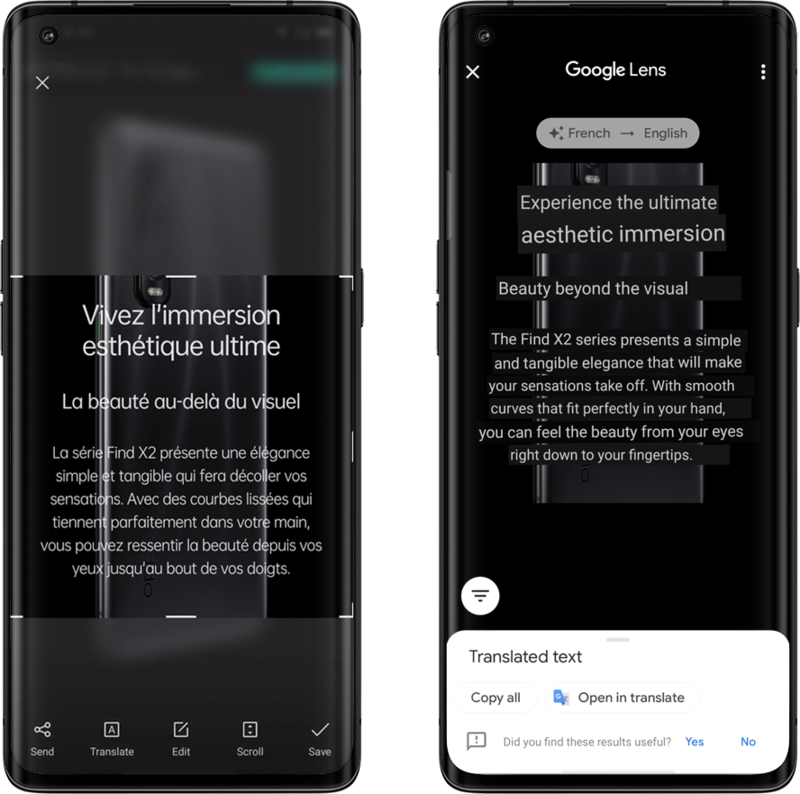OnePlus is stepping away from its Oppo roots in 2021 — and that's exciting

The January launch of the Samsung Galaxy S21 series saw Android flagship season kick off a little early this year. But as spring approaches, we're about to see a lot more of the year's best Android phones breaking cover.
Two of these will be coming fromOnePlus and Oppo, both owned by China's BBK Electronics. Flagship launches for both brands are rumored to be taking place in March, and in recent months the two combined their smartphone research and development teams, seemingly doing away with the long-running charade that they're not basically the same company.
These developments will surely have a huge impact on future phones from both brands, and make total sense given that the two already share a huge amount of technology and manufacturing facilities.
OnePlus is going mainstream, while Oppo attempts to gobble up Huawei's market share in Europe.
But if you look at the two upcoming flagships for these brands, the OnePlus 9 Pro and Find X3 Pro, you'll see very different approaches to making a high-end smartphone, reflecting the very different places these brands find themselves in.
OnePlus started out as the darling of Android enthusiasts, but has pivoted hard towards the mainstream in recent years, expanding its portfolio of lower-end phones significantly and attracting a fair bit of blowback in the process. Its software is looking more like Samsung's, and it's shipping cheaper phones with shorter support life cycles in an attempt to boost revenues. Nevertheless, the brand remains a big deal, especially in Europe and North America, despite having been seen to "go corpo" in 2020. It was hard to watch the departure of co-founder Carl Pei, and the emergence of ho-hum phones like the Nord N10 and N100 and avoid the conclusion that OnePlus had lost a bit of its mojo.

Oppo, on the other hand, is continually expanding from its stronghold in Asian markets, looking to fill the Huawei-sized gap in Europe and dramatically improving its (previously quite terrible) ColorOS software. While not as nimble as its little brother, Oppo can offer premium features like periscope super-telephoto cameras and the fastest wired charging. The phones are big and bright, and the software unapologetically different from vanilla Android in the same way Samsung's One UI is. Oppo is already a huge smartphone brand, and it's not trying to be anything but that.
The trajectory of OnePlus in 2021 continues from where it left off in late 2020. The latest OnePlus 9 Pro leaks point to an upcoming camera partnership with Hasselblad, a deal which surely involves some money changing hands for the veteran camera brand's logo to appear on the back of OnePlus's phone. That stands in stark contrast to the OnePlus of 2019, which forwent IP68 certification for water resistance to hit a competitive price point with the OnePlus 7 Pro. Expect the 9 Pro to be an expensive high-end phone, offset by the arrival of the 9 and 9 Lite further down the totem pole.
Get the latest news from Android Central, your trusted companion in the world of Android
Courting a camera co-branding deal is new, and a little out of character for OnePlus.
While Hasselblad and smartphones may conjure memories of the disastrous Hasselblad TrueZoom Moto Mod of 2017, OnePlus has generally done a good job with photography of late. In 2019 the company opened a camera lab in Taipei, Taiwan, and the fruits of its research can be seen in the quality of the OnePlus 8 Pro's camera system.
While we don't yet know a lot about the 9 Pro's camera system outside of the Hasselblad partnership and an apparent telephoto upgrade to 3.3X zoom, Oppo has apparently retreated from one of the major photographic wins of 2020's Find X2 Pro: its excellent 5X superzoom. Reliable leaks from Evan Blass point instead to a mere 2X telephoto in this year's model, with the standard and ultrawide cameras instead being the main focus. Both look set to use an as-yet unannounced 50-megapixel Sony IMX766 sensor. (It remains to be seen whether this sensor is an Oppo exclusive or whether, as with the IMX698 in 2020, OnePlus will also be able to source the part for the 9 Pro's Hasselblad shooter.)

Hasselblad or 25X macro?
Instead of superzoom, Oppo will reportedly ship an up to 25X macro camera with a 3-megapixel resolution. That sounds like exactly the kind of gimmickry we've seen from some OnePlus cameras in recent years. But it'd be unfair to prematurely judge this feature before we've seen what it can do. Nevertheless, it's hard to look upon the lack of a periscope zoom camera as anything but a downgrade from the Find X2 Pro.
Elsewhere, we're finally reaching a point where wireless charging is standard across basically all Android flagships, with both Oppo and OnePlus likely to share the same 65W wired and 30W wired charging capabilities. Once again, if the brands' track record holds, this will basically be the same technology, only with different branding.

Software remains the greatest area of differentiation between OnePlus and Oppo. Although OxygenOS 11 took a much more opinionated approach to software design, in contrast to the Pixel-like UI of previous versions, it's continued its dialog with fans around the future direction of its software. And so, expect the OnePlus 9's software to look broadly the same as the 8T's, though with more community-inspired innovations.
Over in the Oppo camp, the recent ColorOS 11 update gives us a good idea of what to expect from the Find X3 series: More customization, better multitasking capabilities, and improved Google services integration, such as the new three-finger gesture to activate Google Translate. Given its recent inclusion in Samsung's One UI, I also wouldn't bet against the Google Discover home screen feed making its way to a future version of ColorOS. Otherwise, the distinctive ColorOS look and feel seems set to remain.
While on the one hand OnePlus and Oppo are pooling their R&D resources, on the other they'll be directly competing with each other in the cut-throat high-end smartphone market — particularly in key markets like Western Europe. As the year progresses, we'll be watching with interest to see which brand prevails.

Alex was with Android Central for over a decade, producing written and video content for the site, and served as global Executive Editor from 2016 to 2022.
